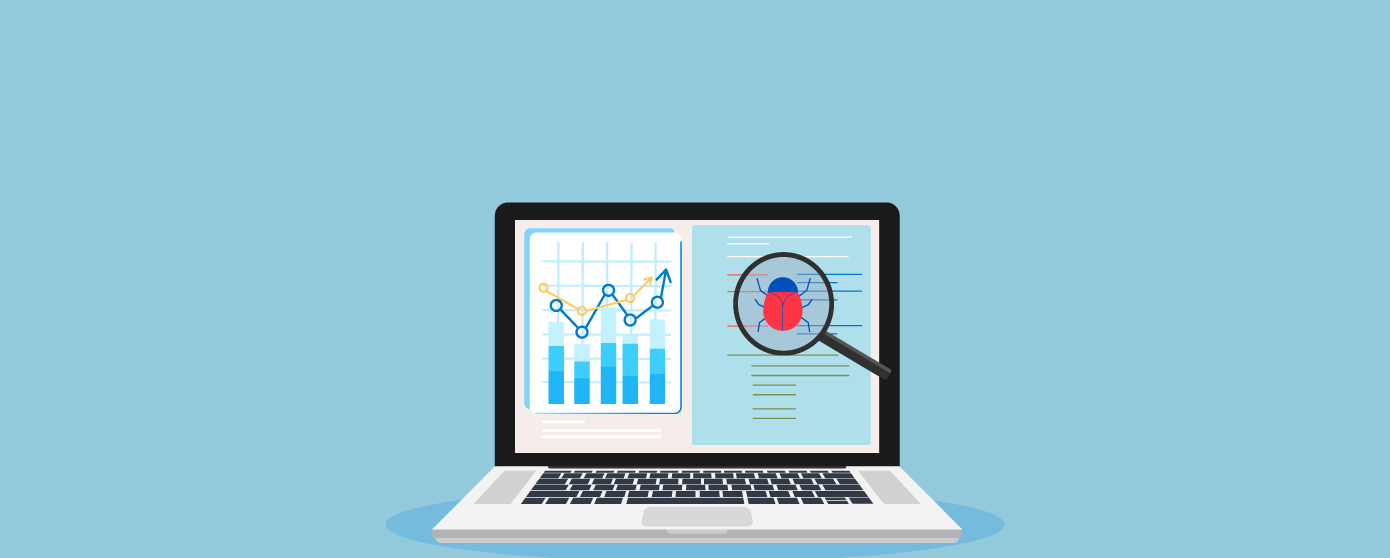
There are over 40,756 open vulnerabilities in applications – according to Indusface AppTrana, August-September 2022.
90% of all vulnerabilities unearthed in the past year were exploitable, even by attackers with little technical knowledge or skills. In short, the preceding year was an incredibly challenging one for security teams everywhere.
Given the circumstances, the need to build and maintain a sound security posture is ever so important. And an ongoing vulnerability assessment process is a vital piece of the security puzzle.
Why are ongoing cybersecurity vulnerability assessments so important? Read on to find out.
The typical vulnerability assessment process includes these 5 steps:
This risk-based vulnerability assessment process cannot be an isolated, one-off event as the threat landscape is constantly evolving and new vulnerabilities are discovered every day. Suppose organizations want to keep their risks limited to tolerance levels and their assets protected, they need to perform vulnerability assessments regularly with scanning daily and after any major changes to the applications, infrastructure, or business processes. Further, penetration testing and security audits need to be done regularly to augment the VA process and strengthen the security posture.
To build a solid security posture, organizations need to know where they stand regarding risks. A function of vulnerabilities and threats, risks keep fluctuating over time. Regular vulnerability assessments offer real-time insights into the organization’s risks, enabling them to take the necessary action quickly.
Using diverse tools, techniques, and technology, the vulnerability assessment process helps unearth all the security vulnerabilities, misconfigurations, weaknesses, and gaps in the IT infrastructure.
The vulnerability assessment tools leverage the power of intelligent automation to usher agility, speed, accuracy, and flexibility into the scanning process. They can conduct deep, intelligent scans across the IT infrastructure while automatically discovering and adding new areas to crawl. The best tools can test for existing and emerging threats that target your IT infrastructure.
Automated scanning tools are typically augmented with regular manual penetration testing by trusted security experts like Indusface. This helps organizations identify logical flaws, misconfigurations, and unknown vulnerabilities that scanners may miss.
Through ongoing risk-based vulnerability assessments, organizations can continually evaluate the strength of their security defenses and promptly detect cracks in the armor – on the human, network, application, and systems fronts. This way, they can instantly take steps to strengthen their defenses and ensure that their data, mission-critical assets, and infrastructure remain protected. It helps organizations maximize the efficiency of their security systems.
The vulnerability assessment process does not stop with identification; it includes vulnerability analysis and prioritization. When the process is ongoing, organizations get an insight into the exploitability of different vulnerabilities, how they could be exploited, the impact of attacks, etc., vis-à-vis the changing threat landscape. So, organizations can keep hardening their security posture.
The attack surface is ever-expanding with several moving parts, shared services, third-party components, and software. Organizations must be aware of their assets. With an ongoing vulnerability assessment process, they can create and keep updating their asset inventory. The automated vulnerability assessment tools make this process quick, accurate, and efficient. So, they can gain real-time visibility into their attack surface and identify the areas of exposure before attacks have the chance to identify and gain access to them by making conscious efforts to reduce their attack surface.
Ongoing vulnerability assessments also tell organizations about the position and condition of each asset/ system/ device connected to the network, its purpose, and related systems. Based on this, assets can be prioritized, and greater efforts can be directed towards business-critical assets.
From real-time, actionable insights to thorough reporting and documentation, an ongoing vulnerability assessment equips organizations to make the right decisions at the right time, prepare solid incident response plans, formulate robust strategies, and strong security controls. Organizations are not basing their strategy and decisions on dated information and reports but on the latest insights. This helps strengthen their security posture.
In Conclusion
Vulnerability assessment processes enable organizations to know their risks and alleviate them, thus, hardening their security posture.
Found this article interesting? Follow Indusface on Facebook, Twitter, and LinkedIn to read more exclusive content we post.
This post was last modified on January 2, 2024 17:27
Explore crucial tactics like Asset Inventory, Patch Management, Access Control & Authentication, and additional best… Read More
Delve into the data privacy questions including consent protocols, data minimization strategies, user rights management,… Read More
Secure Node.js APIs using best practices: Employ proper HTTP methods, robust authentication, and API-specific security… Read More